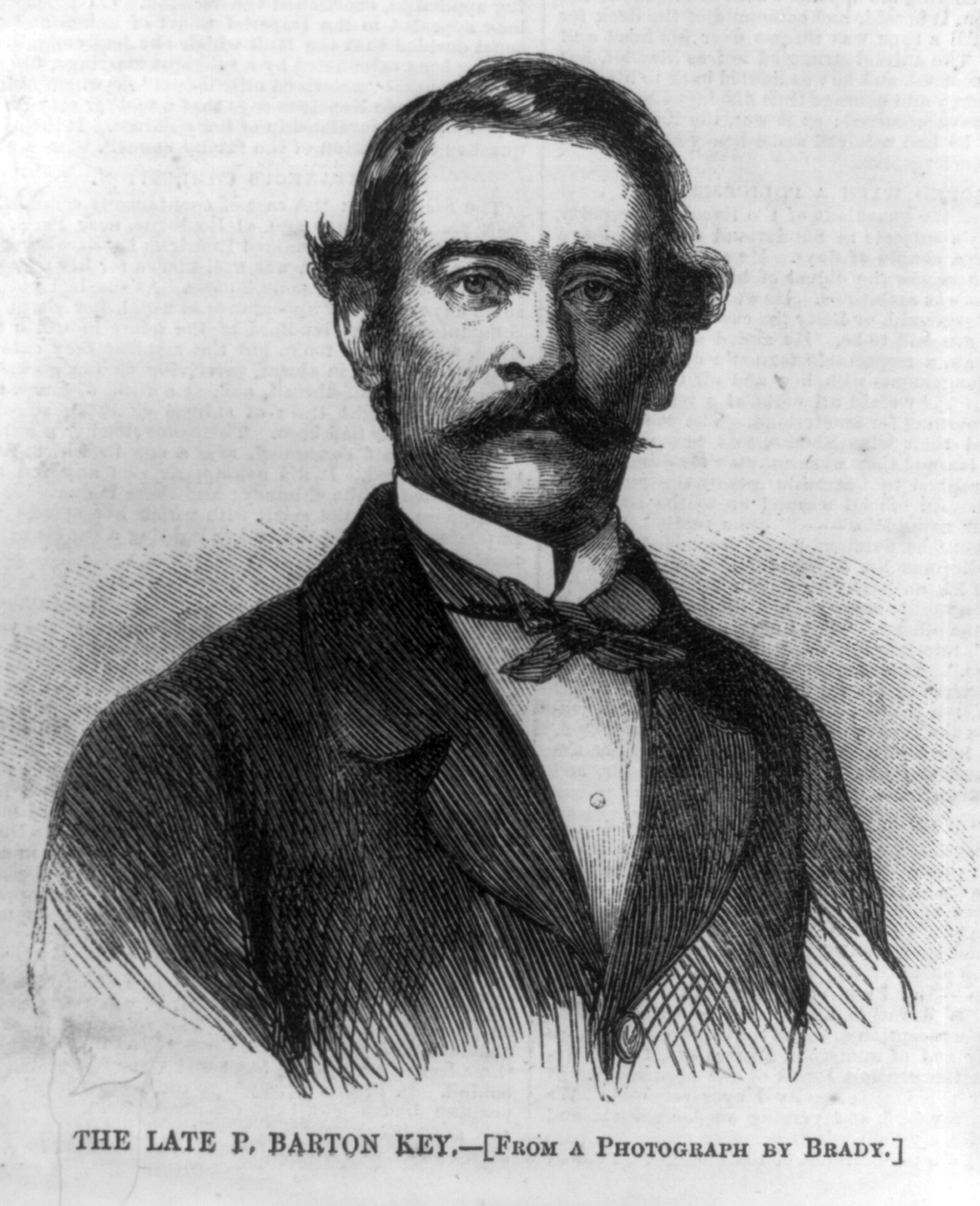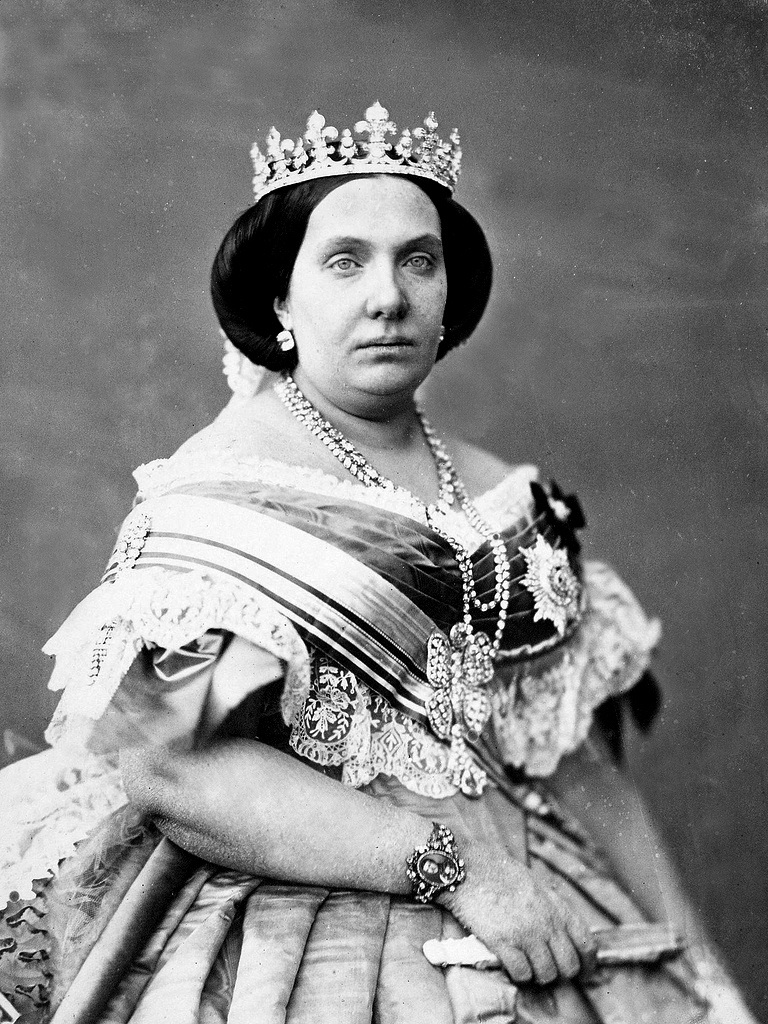SPECIAL EDITION – Major General Daniel Sickles

October 20, 1819 – May 3, 1914
Few figures of the American Civil War are more dubious than Daniel Edgar Sickles. His self-motivated actions on and off the battlefield have been debated by historians and buffs to this day. Even his date of birth elicits controversy. Daniel Sickles was supposedly born in New York City on October 20, 1819—although it is quite possible he was born on October 20, 1825.
A product of the “Tammany Hall” political machine, Dan Sickles served as both a lawyer and politician in the Empire State. At the age of 28, his political connections gained him the position of corporation counsel of New York City, and also led him to a New York State Senate seat.
Dan Sickles married his wife, Teresa Bagioli – – twice. He knew her family and had known her since her infancy. When he made her acquaintance again in 1851 as a New York Assemblyman, he was 32 and she was 15. Sickles, a notorious womanizer, was quite taken with Teresa and soon proposed marriage. Despite his prominence and long connection to the family, the Bagiolis refused to consent to the marriage. Undeterred, the couple wed on September 17, 1852, in a civil ceremony. Teresa’s family relented and the couple married again, this time with John Hughes, Catholic Archbishop of New York City, presiding. Some seven months later in 1853, their only child Laura Buchanan Sickles was born.

1836 – February 5, 1867
They were married until 1867 when she died of tuberculosis at the age of 31.
In 1856, Sickles was elected to the United States House of Representatives. Dan Sickles and his young wife, Teresa Bagioli Sickles, lived a lavish Washington D.C. lifestyle. The two leased a mansion at Lafayette Square, just across from the White House. The couple hosted grand dinner parties for the upper crust of Washington society. It was well-known within the Washington social circles that the couple were less than faithful in their marital vows.
On February 25, 1859, Sickles shot and killed his wife’s lover, Philip Barton Key—in broad daylight. The victim was the son of Francis Scott Key, (author of the Star Spangled Banner). Abraham Lincoln’s future Secretary of War, Edwin Stanton represented Sickles in what would be the first successful use of the “temporary insanity” defense in the United States. The following is the rest of the story as told by Matt Soniak on mentalfloss.com:

On a Sunday afternoon in Washington, D.C., in 1859, Philip Barton Key, son of the man who wrote “The Star Spangled Banner,” stood in the park and waved his handkerchief in the air. He was attempting to signal his girlfriend, Teresa Sickles, who lived across the street, so that they could sneak out for a date.
Someone parted the curtains in a window of Sickles’ home and watched Key for a few minutes, but it was not Teresa. It was her husband Daniel, a well-known politician (at left in photo above). He continued to watch as Key attempted to call up to Teresa’s window. He had known for several weeks that Key was sleeping with his wife. Worse, his friends and neighbors had known, too.
Watching his wife’s lover calling upon her in full view of everyone on the street right in front of him, Sickles lost it. Consumed by rage, he grabbed two handguns from his bedroom and stormed out of the house, across the street and into the park. He ran up to Key, screaming, “Key, you scoundrel, you have dishonored my home. You must die. You must die! You must die!”
Sickles fired several times at Key, striking him in the leg and in the hand. Key grabbed Sickles’ lapels and the two men grappled on the ground, in full view of the homes of Washington’s elite. Sickles pulled away, stood and drew his second pistol. Key drew the only weapon he had, a pair of opera glasses, and threw them at his assailant. Sickles fired and hit Key near the groin. Falling back against a fence, Key pleaded for his life.
Sickles pointed the gun at the center of Key’s chest and fired. Key staggered away, dying a few minutes later. Sickles stepped back and looked around. At least a dozen people had witnessed the entire thing. Sickles fled and surrendered to the police a few hours later at a friend’s house, where he was charged with murder and taken to jail.
As a former Congressman, Sickles enjoyed certain perks during pre-trial detention. So many people came to wish him well that he was given use of the jailer’s apartment to entertain his guests, among them Congressmen and other high-level members of the federal government. President James Buchanan did not make a visit, but did send Sickles a personal note. During this time, Sickles secured several renowned politicians as his defense attorneys, including Edwin M. Stanton, who would later become Lincoln’s Secretary of War. And the whole time he was detained, Sickles was also allowed to keep a weapon on his person.
Even though the proceedings were outrageous even by today’s standards of prime-time-ready crime and celebrity defendants, it is not Key’s murder or the unorthodox confinement for which we remember Daniel Sickles. It is for what he did next: told the court that he should be found innocent of the crime due to reasons of insanity, something that no one in America had ever done before.
At trial, the jury was filled in on the soap opera dramatics that led up to Key’s death. The victim was the District Attorney for the capital, the son of the man who wrote the national anthem, a close friend of his killer and, according to local gossip, “the handsomest man in all Washington society.” The defendant was a well-connected Congressman from New York with a reputation as a ladies’ man. He’d been censured for bringing a prostitute onto the floor of the New York State Senate, and had married his pregnant 15-year-old wife against her family’s wishes when he was 33. Despite his notoriety, Sickles and his wife had been welcomed into Washington’s most elite social circles after Daniel was elected to Congress. They became fast friends with Key, and Daniel often asked Key to escort his wife to social events whenever the congressman had to work late or was occupied with a girlfriend or one-night stand. Key and Teresa’s friendship quickly became romantic.
They tried to keep the affair secret, and Key even rented a house in a rough Washington neighborhood so they could meet in private, away from their friends and colleagues. Despite the precautions, the romance became common knowledge in Sickles and Key’s social circle. Eventually, Daniel received an anonymous letter detailing his wife’s infidelity. He confronted Teresa and forced her to write a detailed letter of confession, which she did. By the end of the month, Key was dead.
Sickles’ attorney, Edwin Stanton, argued that Sickles had been driven temporarily insane with grief by his wife’s infidelity and the embarrassing way in which he found out about it. Sickles, he argued, was not in his right mind when he attacked Key, and hence could not be held accountable for his actions. In the court of public opinion, Sickles had already been cleared, and he was applauded in coverage of the trial for striking down his deceptive friend and protecting the wives of the rest of Washington’s rich and powerful from a home wrecker. The jury followed suit and acquitted Sickles of the charges.
The Aftermath
Immediately after the trial, Sickles forgave his wife, and undid all the goodwill he had built up among the press and public. Her betrayal had caused the death of a man, the editorials cried, and no honorable man would have taken her back. Sickles’ popularity in Washington and in New York plummeted and he had no hope of winning reelection to Congress. He returned home to New York in 1861, unemployed and disgraced.
While the murder and acquittal were both shocking, the true shock to the Washington elite came when Sickles did not divorce his wife. Few socialized with the couple. One diarist noted that Sickles was “left alone as if he had the smallpox.”
The Civil War broke out a few months later, giving Sickles a chance at a fresh start.
He began his military career serving as Colonel for the 70th New York Infantry before being appointed brigadier general of volunteers, commanding New York’s Excelsior Brigade.
Sickles served in Joseph Hooker’s Division of the Third Corps during the Peninsula Campaign and returned to New York for recruiting duties for much of the late summer and early fall of 1862. He commanded a division at Fredericksburg, and then assumed command of the Third Corps prior to the Chancellorsville campaign. In November 1862 he was promoted to major general. While he was extremely brave in battle, he often found himself in conflict with superior officers.
At Chancellorsville, Sickles received permission to reconnoiter the Confederate lines, as word spread of a possible Confederate movement in Federals front. Sickles corps engaged the Confederates near the Catharine Iron Furnace. Joseph Hooker, now in command of the Army of the Potomac (the name for the entire Union Army), convinced himself that Sickles had stumbled upon a retreating Confederate column. Rather than pull Sickles back to the main Union battle line, Hooker left Sickles’ 18,000 man corps nearly one-and-a-half miles from the closest Federal support. Later that same afternoon, General Thomas J. “Stonewall” Jackson’s men, which they had mistakenly believed to be in retreat, attacked the Federal right flank. With Sickles’ men in advance of the main Union lines, a gap was unwittingly created by Hooker, between his men on the right flank and the rest of the Union Army. Sickles attempted to fight his way back to friendly lines. Darkness and the close choking woods prevented him from doing so, but Sickles was able to secure a key piece of high ground—Hazel Grove.
The next morning, May 3, 1863, Sickles was ordered to give up Hazel Grove by Joseph Hooker. Sickles protested to no avail. Confederates quickly seized the high ground and pummeled the Union center. By 10am the Federals were withdrawing to a new position.
While Sickles had somewhat stretched his orders during Chancellorsville, he outright disobeyed direct orders from Maj. Gen. George G. Meade during the Battle of Gettysburg. Sickles orders were to cover the Round Tops on the Union left flank. Instead, he moved his men to the Peach Orchard. The result was that the Third Corps was overrun and driven from the field. Sickles lost his right leg in the disaster. In later years, Sickles attempted to perpetuate a version of the battle where George Meade had wanted to retreat from Gettysburg and Sickles’ move to the Peach Orchard won the battle for the Union army.
The debate over the merit of his actions has created some of Gettysburg’s most enduring controversies, and although beyond the scope of this article, these controversies have given Sickles an almost universally negative image among Civil War enthusiasts.
Despite this fiasco Sickles was awarded the Medal of Honor for his actions at Gettysburg, where a cannonball mangled his leg. The citation states that he, “displayed most conspicuous gallantry on the field vigorously contesting the advance of the enemy and continuing to encourage his troops after being himself severely wounded.”
After the surgery, Sickles gained lasting fame for donating his amputated limb to the Army Medical Museum in Washington, DC. The limb was received with a small card which said, “With the Compliments of Major General D.E.S.” Part of the Walter Reed Army Medical Center, the Army Medical Museum has kept Sickles’ amputated limb on display to this day.

From left to right: Major Henry Tremain, Lieutenant Colonel Orson Hart, Major General Daniel Edgar Sickles, Captain Thomas Fry, Captain Alexander Moore.
(Did you notice the placement of the buttons? Remember I mentioned that in the 9/18 post?)

Oh, come on. You knew I’d post this if I could find it! 😊
Abraham Lincoln sent Sickles to the South where he assessed the effects of slavery on African Americans and gave suggestions for Reconstruction in the future. After the war he held a variety of positions: diplomat to Colombia, Military Governor of South Carolina, Chairman of the New York Civil Service Commission, New York City Sheriff and Chairman of the New York State Monuments Commission. He was removed from the monuments committee for allegedly pocketing funds. I’ll share about that in a minute.
He was Minister to Spain from 1869 to 1873. While in Madrid, he allegedly had an affair with Queen Isabella II, began a stormy second marriage to one of Isabella’s twenty-something attendants.

October 10, 1830 – April 9, 1904
Full Name: María Isabel Luisa de Borbón y Borbón-Dos Sicilias
Reign: September 29, 1833 – September 30, 1868
Señorita Carmina Creagh, was Maid of Honor to Queen Isabella of Spain – with whom it had been rumored that Sickles had a lengthy affair – was introduced to the U.S. Minister to Spain, Daniel E. Sickles at a Court function given by the Queen in 1871. (But according to the above information, she’s no longer Queen, so I’m a bit confused by that . . . )

Carmena Creagh 
1840 – 1919
They married soon thereafter and gave all appearances of a happy relationship. During his stint as US Minister, Sickles quarreled with Secretary of State Hamilton Fish, was accused of using “child virgins for the purpose of prostitution,” and encouraged a war with Spain. Life with Sickles was never dull.
He resigned and moved to Paris in 1874. His wife declined to travel with him and remained in Spain. In late 1879, Sickles decided to return to the United States. Caramina remained in Spain, except for one brief time when she did live in the United States. Daniel and Caramina had two children, George Stanton and Edna, but they lived most of their 40 year marriage apart. However, Carmina and their son, George lived in New York, close to Dan, near the end of his life.


on the Gettysburg battlefield, 1888

Picture shows Union Civil War Generals Joseph Carr, Sickles and Charles Graham.
He was also re-elected as a New York Congressman in November 1892, more than thirty years after he had left office in disgrace following his 1859 murder of Philip Barton Key. The New York Times would later marvel that Sickles was returning at “an age when most men are ready to retire.”
With Gettysburg’s future attended to (the beginnings of designating the area a National Park), Sickles remained busy in “retirement,” specifically continuing to chair the New York Monuments Commission. Unfortunately, despite Sickles’ considerable organizational and political abilities, he was also his own worst enemy. The state controller did an audit of the commission’s books and found approximately $28,486 missing.
Sickles was now in his early nineties, in failing health (reports of his being a lady’s man until the very end were probably false), personally bankrupt (he had squandered a large inheritance from his father), and embroiled in a messy public squabble between his estranged second wife and his mysterious housekeeper, Eleanor Earle Wilmerding. It was readily apparent that he was no longer capable of managing his own household affairs, let alone the finances of such a large organization. One member of the commission stated, “It is most unlikely that the shortage was incurred with dishonorable motives or that there will be any criminal prosecution. General Sickles allowed the shortage to occur through laxness rather than design.”
Although there were many veterans, his estranged second wife and son, and James Longstreet’s widow were among those who came to his assistance. Commissioner Sickles was facing potential jail time (once again). But fifty years’ worth of battlefield speeches paid off for him. He was a celebrity and bona fide war hero. New York was facing a public relations nightmare. Sickles’ attorney (whom Dan’s son believed was partially responsible for the missing money) arranged for Sickles to remain free on bond and he avoided jail time. But New York never received the money, and it was an embarrassing end to several decades’ worth of Sickles’ positive preservation work. Not surprisingly, today it historically overshadows all of his better efforts.

I couldn’t find the year,
but I’m gonna guess it’s 1913 at the 50th anniversary of the Battle of Gettysburg.
What has gotten lost amidst the negative Sickles portrayals, is the often commendable work that he did in preserving the Gettysburg battlefield. Dan Sickles was a driving force in the early preservation and development of Gettysburg National Military Park. In addition to establishing the appropriate legislation in Congress, he was the leader in marking New York’s positions and monuments on the battlefield. Few veterans contributed as much to memorializing the battlefield as he did. Many men played significant roles on the battlefield, and many were significant in developing the National Military Park as we know it today. But Sickles is unique in having made significant contributions both during and after the battle. He visited Gettysburg many times after the war.
Whatever one may think of his personal character, or of his battlefield actions, anyone who enjoys the Gettysburg National Military Park today owes a debt of gratitude to Dan Sickles.
Sickles died of “cerebral hemorrhage” at New York City on May 3, 1914. He is buried at Arlington National Cemetery.
~ Information obtained from battlefields.com, wikipedia and mentalfloss.com.
